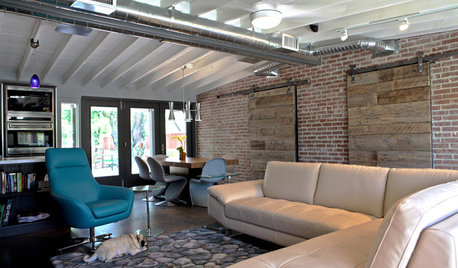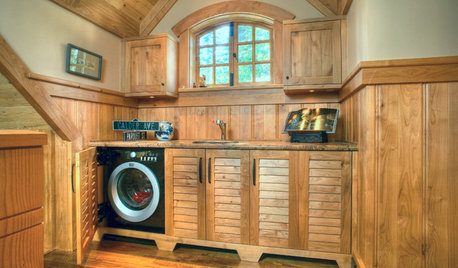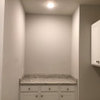whirlpool dryer blows cold air
jvmagic
15 years ago
Related Stories

LIFEHouzz Call: How Are You Handling the Record-Breaking Cold?
Share your tales, strategies and photos for everything polar vortex
Full Story
ARCHITECTURE15 Smart Design Choices for Cold Climates
Keep your home safe and comfortable in winter by choosing the right home features and systems
Full Story
REMODELING GUIDESWake Up Rooms With the Power of Fresh Air
Even the trendiest interior designs can feel stale when your home is in permanent lockdown. Look to windows and doors for the solution
Full Story
LIFE6 Ways to Cool Off Without Air Conditioning
These methods can reduce temperatures in the home and save on energy bills
Full Story
BATHROOM DESIGNLovely Little Luxuries: Pamper Yourself With Towel Warmers
Heat your robes, dry delicates and wet mittens — with these warmers around, toasty treats go beyond just towels
Full Story
ARCHITECTUREHVAC Exposed! 20 Ideas for Daring Ductwork
Raise the roof with revealed ducts that let it all hang out — and open a world of new design possibilities
Full Story
LAUNDRY ROOMS7-Day Plan: Get a Spotless, Beautifully Organized Laundry Room
Get your laundry area in shape to make washday more pleasant and convenient
Full Story
THE HARDWORKING HOMEWhere to Put the Laundry Room
The Hardworking Home: We weigh the pros and cons of washing your clothes in the basement, kitchen, bathroom and more
Full Story
KITCHEN DESIGNStay Cool About Picking the Right Refrigerator
If all the options for refrigeration leave you hot under the collar, this guide to choosing a fridge and freezer will help you chill out
Full Story
LAUNDRY ROOMSClever Ways to Hide a Laundry Station
When you don’t have a whole room to devote to the wash, use these solutions to tuck the machines out of view
Full StoryMore Discussions









somonica
jvmagicOriginal Author
Related Professionals
Barrington Hills Kitchen & Bathroom Designers · Highland Park Kitchen & Bathroom Designers · Schaumburg Kitchen & Bathroom Designers · Wood River Kitchen & Bathroom Remodelers · Green Bay Kitchen & Bathroom Remodelers · Tenafly Cabinets & Cabinetry · Scotch Plains Custom Closet Designers · American Canyon Flooring Contractors · Hugo Flooring Contractors · Pasadena Flooring Contractors · Seabrook Flooring Contractors · Sycamore Flooring Contractors · Tigard Flooring Contractors · Uxbridge Flooring Contractors · Fullerton Flooring Contractorsdadoes
jvmagicOriginal Author
dadoes
jvmagicOriginal Author
jvmagicOriginal Author
dadoes
dadoes
dadoes
dadoes
jvmagicOriginal Author
jvmagicOriginal Author
dadoes
jvmagicOriginal Author
dadoes
jvmagicOriginal Author
dadoes
jvmagicOriginal Author
dadoes
suburbanmd
jvmagicOriginal Author
jvmagicOriginal Author